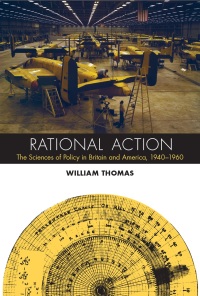History of Science course Cliff’s Notes February 7, 2008
Posted by Will Thomas in History 174.Tags: History 174, Peter Dear
trackback
I think my students are getting a little blown away this early in the semester with what I have to admit is some fairly heavy stuff. We had our first sections Tuesday, and my TA showed me “one of the better” quizzes. “But Christopher,” I said, “this person didn’t get anything right!” At least they filled in the blanks. Now, mind you, I’m telling my students exactly what will be on the quiz. If the topic isn’t on my nifty Powerpoint lecture slides or mentioned three times in the textbook (and we haven’t gotten to the first textbook, Peter Dear, yet), it won’t be on the quiz–and these slides are made available on the course website. Nevertheless, I’m told, the students looked at my TA “as though he had two heads” when handed the quiz.
Anyway, I’m convinced that once it sinks in that the class isn’t going to be “nifty background for science majors” they’ll be up to the task. But I’m also giving them online Cliff’s notes to help them through the material. I thought I’d repost these here as well as my background posts, just to demonstrate what I’m up to in a bit more detail. As a warning, these will be sort of on the long side.
Reposted from the History 174 Blog
Today’s lecture blew by quicker than I thought, and with a topic as vague as medieval literary culture, a number of you seem to feel that a little more road map might have been nice. I’ll go over a few main points here, but my first point is not to worry too much. We’re still in background material, and so if you just come away with some impressions of what the medieval book culture looked like, that should be OK to get along with. But, here’s a quick recap:
1) There are a lot of different kinds of medieval books that were not well distinguished from each other: books of hours (devotional instruction manuals) blended into hagiographies (saints’ lives), which blended into history and bestiaries (for example, a bestiary might discuss St. George’s encounter with the dragon), which blended into “books of secrets” (such as The Secret of Secrets, which was supposed to be a letter from Aristotle to Alexander the Great), which were supposed to reveal hidden, occult knowledge about the way the world worked, but might also have practical advice on statecraft.
2) Books were not “books” as we know them. Except for the Bible, they were copied and rearranged, quoted and reproduced in whole or in part without attribution–and different copies of the same book might contain different material. Sometimes authors impersonated other wiser authors, so some books were supposed to be by “Aristotle” but we now know that they were written by someone we can only call “pseudo-Aristotle”
3) Books, except in matters of religion, were not supposed to tell you anything practical. The most important medieval “truths” were spiritual ones, so oftentimes their contents were supposed to offer a moral or be interpreted symbollically. In some cases, they were simply meant for entertainment, to provoke “wonder” in the minds of the readers (more on this later). Books were not intended to be scrutinized for whether or not they were “true” (as we would interpet the term), and so blended fact and fiction indiscriminately.
4) It was widely believed that the Ancients (and Biblical figures) knew everything important and wrote it down, but that that knowledge was lost as books were lost and text was corrupted (say, by a careless scribe). The key point is this: knowledge (including the allegorical kind) was supposed to be directly tied to the words the Ancients had written down–not an unusual thought for a culture where the Bible was considered the ultimate authority. Scholarship mostly involved preserving and reassembling this Ancient knowledge, not creating new knowledge.
5) Not all literary traditions followed this trend. Some authors wrote from personal experience. Gottfried of Franconia’s book on trees and wine mixed literary sources with his own reports indiscriminately. Theophilus, in his book “On the Various Arts” spoke entirely from his own experience. Frederick II (Holy Roman Emperor), in his book on falconry, openly scorned the literary tradition that valued text over experience. But, for the most part, knowledge gained from practical experience was passed on orally (say, within a guild)–it was not tied to book culture.
6) Ultimately, the medieval literary culture did not fade away but coexisted with a new experienced-based literature. We can see this in travel narratives. William of Rubruck aimed to report back to Louis IX as accurately as he could what he found out in the east. Marco Polo’s narrative (actually written down by someone experienced in writing chivalric romances), on the other hand, sought to please and entertain as well as inform his audiences. Marco Polo’s description of exotic wonders created a large audience for John de Mandeville’s Travels, which were totally untrue and replicated the earlier conventions of the bestiary and the hagiography.
[Plus some general tips on using sections to their advantage, etc.]

I admit I’m having a hard time following along as well, even though I consider myself a moderately intelligent human being. Maybe it’s the fact that my knowledge covers much more science than history.
Hey again Brad–didn’t see your prior comment down here. Yeah, this blog’s primarily aimed at the history of science community (people who probably have some exposure to this). So, this isn’t really a beginners guide to history of science–that’s my course with lectures and textbook included. Let’s grab a beer sometime and I’d be happy to nerd out about it further.